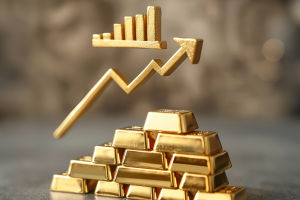Market overheating describes a condition where asset prices rise too quickly to levels unsustainable by underlying economic fundamentals, often presaging a correction or crash.
Identifying an overheated market involves multiple indicators including valuation metrics, speculative behavior, credit expansion, and economic growth divergence from asset prices.
As of 2025, there is growing debate around whether various global markets, especially real estate and equities, have entered such a phase amid rapid valuation increases and economic uncertainties.
Signs of Market Overheating
Several characteristics commonly indicate market overheating:
Excessive Price Appreciation: Asset prices significantly outpace historical averages or income fundamentals.
High Trading Volumes and Speculation: Increased participation from speculative investors looking for short-term gains.
Credit Growth and Easy Financing: Rising debt levels supporting asset purchases without commensurate income growth.
Disconnect with Economic Indicators: Asset prices rise despite slowed or stagnant economic growth, signaling misalignment.
Increasing Volatility and Risk Seeking: Investors demonstrate riskier behavior, seeking higher returns while downplaying risks.
For example, in real estate, rapid price rises combined with speculative buying and easy mortgage credit heighten overheating risks. In equity markets, disproportionate price-to-earnings ratios and heightened retail investor activity can be warning signs.
Renowned financial expert Robert Shiller, has cautioned about overheated markets particularly when price surges lose connection with earnings growth or long-term economic trends. He noted in prior work that "irrational exuberance" can propel market bubbles that eventually burst, causing wide-reaching economic disruption. Shiller's historic insights underpin efforts to monitor valuation metrics realistically and temper speculative excesses.
Similarly, Howard Marks, co-founder of a reputed capital management firm, has consistently warned about market excesses. As he stated in his widely-read investment memos, "An overheated environment doesn't mean the market's going down tomorrow, just as an excess of risk aversion doesn't signal it's the absolute bottom. But the circumstances should inform our behavior." His approach emphasizes careful risk management when markets demonstrate signs of overheating, highlighting prudence over chasing high returns.
Current Market Context in 2025
In 2025, certain markets reveal overheating tendencies amid mixed economic signals. The Metro Manila real estate market, for instance, is under scrutiny for a potential bubble driven by fast price growth outpacing wage increases and economic fundamentals. This situation exemplifies classic signs of overheating, including speculative investment and credit-fueled purchases.
Implications and Strategic Considerations
Markets demonstrating overheating signals require cautious navigation. Investors and policymakers must balance growth opportunities with risk containment to prevent severe corrections. Key strategies include:
- Enhanced risk assessment and monitoring of valuation indicators.
- Promoting sustainable credit practices to avoid excessive leverage.
- Encouraging transparency and prudent regulatory oversight.
- Diversifying investment portfolios to manage volatility.
Market overheating reflects a stage where asset prices rise beyond justified economic values, often fueled by speculation and easy credit. The year 2025 shows mixed signals of overheating across global markets, especially in real estate hotspots like Metro Manila, while other sectors exhibit adaptation rather than excess. Vigilance and strategic discipline remain crucial as markets evolve amid economic and global volatility.


